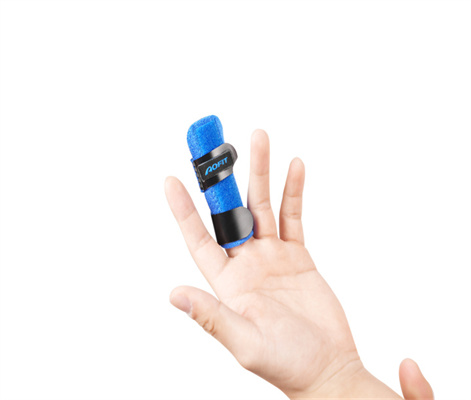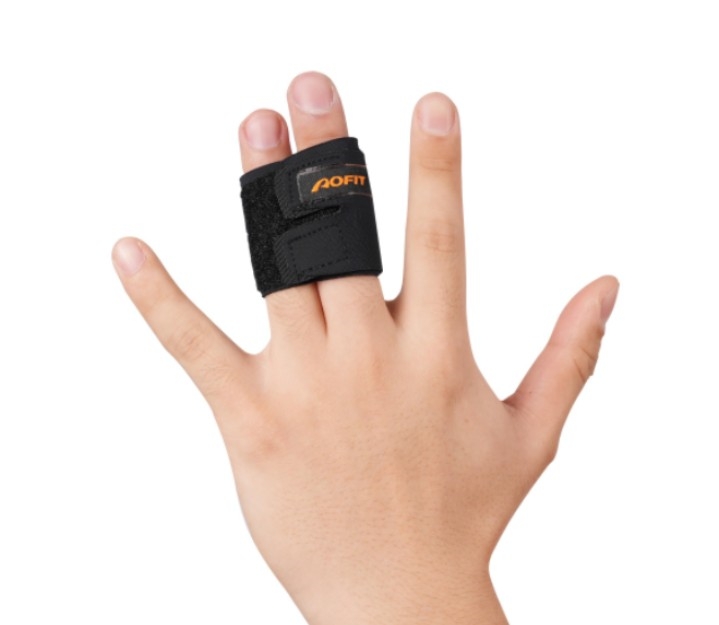Introduction
Welcome to our comprehensive guide on preventing and treating basketball finger injuries. As avid basketball players and enthusiasts, we understand the importance of maintaining optimal hand health to perform at our best on the court. Hand injuries are common in athletics and account for up to 9% of all sports injuries. We will provide you with valuable information and tips to help you prevent and manage common basketball finger injuries. Whether you're a professional athlete or a recreational player, this guide will equip you with the knowledge you need to stay in the game and outperform your opponents.
Types of Basketball Finger Injuries
1. Mallet Finger
What is it: Mallet finger is a tendon injury that straightens the end joint of a finger or thumb. It results in the inability to actively straighten the finger/thumb at the end joint.
Mode of injury: Mallet finger often occurs when the ball strikes the tip of an extended finger or thumb during activities like rebounding, causing forceful bending beyond the normal range.
Treatment: For a mallet finger, a hand therapist will assess the injury and provide a custom-made thermoplastic "cap splint." This splint will hold the finger in the correct position for healing.
2. Volar Plate Injury
What is it: A volar plate injury involves the thick ligament that connects two bones in the finger. Hyperextension (backward bending) can cause stretching and tearing of the volar plate. In some cases, it can also lead to an avulsion fracture, where a piece of bone is pulled off.
Mode of injury: Volar plate injuries often occur when the finger is struck by the ball or another player, forcing it to bend backward too far.
Treatment: Hand therapists will assess the injury and provide a custom-made thermoplastic "dorsal blocking splint." This splint holds the finger in the correct position for healing.
3. Sagittal Band Injury
What is it: The central slip extensor tendon is in charge of straightening the finger's middle joint (PIPJ). This tendon can be stretched and torn as a result of hyperflexion (forceful bending of the middle joint). The sagittal band serves as the principal stabilizer of the extensor tendon at the metacarpophalangeal (MCP) joint, and damage to this region contributes to hand injuries. It prevents bowstringing during MCP hyperextension and ulnar tendon deviation during MCP flexion. Boxer knuckles, also known as sagittal band rupture, can occur as a result of both acute and chronic occurrences.
Mode of injury: Central slip extensor tendon injuries often occur when the finger experiences traumatic hyperflexion, such as when it is struck forcefully by the ball.
Treatment: Hand therapists will assess the injury and provide a custom-made thermoplastic splint to hold the finger in the correct position for healing.
4. Finger Fractures
What is it: Finger fractures in basketball players can range from simple hairline fractures of the finger bone to more complex fractures involving ligaments and tendons.
Mode of injury Finger fractures are broken in the bones of the finger and can vary in severity. Fractures can occur when the finger is bent or twisted beyond its normal range of motion, often due to direct impact or collision with another player.
Treatment: Hand therapists will assess the fracture and provide a custom-made thermoplastic splint to immobilize and support the finger during the healing process.
Preventing Basketball Finger Injuries
Prevention is key when it comes to maintaining hand health and minimizing the risk of basketball finger injuries. By following these proactive measures, you can significantly reduce the likelihood of experiencing finger-related issues on the court.
1. Proper Warm-up and Stretching
Before every basketball session or game, it is essential to engage in a thorough warm-up routine. This should include gentle stretching exercises that target the muscles and ligaments in the hands and fingers. By increasing blood flow and flexibility, you can prepare your fingers for the demands of the game and reduce the chances of injury.
2. Use Protective Gear
Investing in high-quality protective gear, such as finger splints or braces, can provide added support and stability to your fingers. These devices can be particularly beneficial if you have a history of finger injuries or if you participate in intense and competitive basketball games.
1) AOFIT Brand's Basketball Finger Sleeve for Basketball
Basketball players often face the risk of finger injuries due to the intense ball handling and contact involved in the sport. AOFIT's Finger Wrap for Basketball is designed to provide optimal support and protection for your fingers. Its lightweight and breathable material ensures comfort while allowing for natural movement. With adjustable straps and a secure fit, this finger wrap offers stability and helps prevent common finger injuries, such as sprains and jams, allowing you to maintain control and dexterity during gameplay.


2) AOFIT Brand's Basketball Finger Splint for Basketball
We have a stringent quality control process in place to ensure that our basketball finger splints meet the highest standards of quality. From raw material selection to the final product, we conduct rigorous testing and inspection to ensure that every splint is safe, reliable, and performs as intended. Our splints are designed to provide excellent support, protection, and stability to injured fingers during basketball activities. They are made from durable and lightweight materials that offer both comfort and durability.
3. Maintain Proper Technique
Practicing correct basketball techniques, such as proper shooting, passing, and ball handling, can help prevent unnecessary strain on your fingers. Avoid placing excessive stress on your fingers by using your entire hand and wrist to control the ball, rather than relying solely on your fingers.
4. Strengthening Exercises
Incorporating finger and hand strengthening exercises into your regular training routine can improve the overall strength and stability of your fingers. Simple exercises like squeezing a stress ball or using hand grippers can enhance your finger dexterity and reduce the risk of injury.
Treating Basketball Finger Injuries
Despite our best efforts, basketball finger injuries can still occur. If you find yourself dealing with a finger injury, it's crucial to take immediate action to prevent further damage and aid in the healing process.
1. R.I.C.E Method
The R.I.C.E method stands for Rest, Ice, Compression, and Elevation. Following these steps can help reduce pain, and swelling, and promote healing.
Rest: It is essential to give your injured finger adequate rest to allow the damaged tissues to heal. Avoid engaging in activities that put a strain on the finger, such as gripping or catching a ball.
Ice: Applying ice to the injured finger can help reduce swelling and alleviate pain. Use an ice pack or wrap ice in a thin towel and apply it to the affected area for 15-20 minutes every 2-3 hours.
Compression: Applying a compression bandage or wrap to the injured finger can help reduce swelling and provide support. Make sure the bandage is snug but not too tight to restrict blood flow.
Elevation: Elevating the injured finger above the level of the heart can help reduce swelling. Prop your hand up on a pillow or cushion to promote fluid drainage.
2. Pain Management
Over-the-counter pain medications, such as acetaminophen or ibuprofen, can be used to manage pain and discomfort associated with finger injuries. Follow the recommended dosage instructions and consult with a healthcare professional if needed.
3. Rehabilitation and Physical Therapy
Once the initial pain and swelling have subsided, it is crucial to engage in rehabilitation exercises and physical therapy to restore strength, flexibility, and range of motion to the injured finger. A qualified healthcare professional or physical therapist can guide you through appropriate exercises and techniques to aid in your recovery.
Seeking Professional Medical Advice
While the information provided in this article can be helpful, it is important to note that every injury is unique, and professional medical advice should always be sought for accurate diagnosis and personalized treatment plans. If you experience severe pain, deformity, or prolonged swelling, consult a healthcare professional specializing in sports injuries or orthopedics.
Conclusion
In conclusion, preventing and treating basketball finger injuries is crucial for any basketball player who wants to excel on the court. By following proper warm-up routines, using our basketball finger sleeve, practicing correct technique, and engaging in strengthening exercises, you can significantly reduce the risk of finger injuries. In the unfortunate event of an injury, remember the R.I.C.E method for immediate treatment and seek professional medical advice for proper diagnosis and rehabilitation. By prioritizing hand health and taking proactive measures, you can stay in the game and enjoy basketball to the fullest.